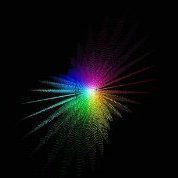
Michael Nash
Premium Member-
Posts
3,302 -
Joined
-
Last visited
About Michael Nash

Profile Information
-
Occupation
Cinematographer
-
Location
Pasadena, CA
-
Specialties
20 years experience film & video production. Currently work as DP, camera operator, and gaffer; features, TV, music videos, commercials. 1st AC, director and editor experience.
Contact Methods
-
Website URL
http://
Recent Profile Visitors
10,230 profile views
-
Straw instead of 85 filters?
Michael Nash replied to Marco King's topic in Lenses & Lens Accessories
It's not a rumor. The filters are still changing the color of the light hitting the film (or sensor), just not to a "perfect" tungsten balance. Remember that color-balancing filters work by virtue of the color of light they block or cancel out. An 85 works by canceling blue-cyan light. Coral filters have a little more red in them and less yellow than 85 series, which means it cancels a little less blue but blocks more cyan. Straw is more yellow and less red, which means it blocks more blue but less cyan. If you pick a filter that's equivalent in density to the appropriate 85, you won't notice much difference in color temperature but you will see a slight shift in hue reproduction, especially when comparing flesh-to-neutral reproduction. -
Phil is pretty much right. I'll add a couple things though. First, please don't confuse LATITUDE with DYNAMIC RANGE. These terms are not interchangeable and mean very different things, both of which are crucial to your understanding of this subject. LATITUDE is the amount an image can be over- or under-exposed and still be color-corrected into acceptable-looking image. Obviously what's "acceptable" is subjective, but let's say you determine that you can underexpose your overall image three stops before the noise and shadow detail becomes unacceptably ugly, and that you can overexpose the image only one stop before the highlight clipping becomes objectionable. That means you have a latitude of four stops (not 12!) -- three stops of underexpose latitude, and one stop of overexposure latitude. LATITUDE is the "wiggle room," or margin-of-error you have for exposure with that system. DYNAMIC RANGE is the full range of luminance the camera system can capture and reproduce. That's usually measured by the ability to differentiate a gray card from pure white or pure black. Obviously that's a very different interpretation of exposure from "latitiude," as those extremes of sensitivity won't produce a recoverable image with a full range of luminance. Secondly, ALL systems, digital and analogue (film), have different imaging characteristics throughout their exposure range. Dynamic range, color hues and saturation, noise, highlight clipping and gamma curves will all change along with the exposure. It's your job as cinematographer (or DIT in your case) to get to know the imaging qualities of the system you're using, primarily by TESTING. There's no inherently right or wrong way to expose an image; just the way that manipulates the technology to produce the desired results. So to answer your original question, you determine the exposure by finding the balance of highlight range, noise, color fidelity and other qualities -- all the way through color correction -- that gives you the look you (and your supervisors) want. In some cases you might decide to significantly underexpose the RAW or LOG image in order to preserve more shadow detail in the scene and highlight range from the sensor; in other cases you might want to nail the RAW exposure dead-on in order to preserve the fullest dynamic range from the sensor with the least noise. There's no one right way to do it. So on a practical level, you usually expose using a LUT. That's what it's for: it's a representation of what the final color-corrected image will look like, taking into account your image adjustments, so that you're NOT confused by the flattened contrast, altered luminance, and uncorrected color of the RAW or LOG image. Use light meters and view the RAW image to verify what you're getting on the sensor, but don't set your exposure by what "looks right" in RAW or LOG view. Incidentally, this is essentially what film cinematographers have been doing for decades, minus the viewable LUT on a monitor. The "LUT" is essentially in the DP's head (and on paper in the form of notes); you expose your image according to the testing you've done with the film stocks, lenses and filters, and lab and printing processes you're going to be using, not necessarily by the film's actual ASA rating.
-
I'd say pick the right tool for the job, both for cinematography and aviation. I've done a fair amount of aerial cinematography and I'm studying for a PPL, and none of this strikes me like the right way to go -- especially if you've got a sizable budget. Don't underestimate the amount of panning, tilting, and even rolling you'll need to get good compositions from a moving aircraft. I don't think a small hole in a window would allow nearly enough camera movement, not to mention the aircraft modification and all that that would entail. You don't state the requirements for your aerial shots, so it's hard to make suggestions for alternative rigs. What kinds of subjects? What altitude do you need for the desired shots? What kind of camera angle, focal length, and camera/aircraft movement do you need for your shots? All of these things will point you toward the best suited tools. You don't necessarily need a helicopter for your second camera ship. There are lots of small, lighter aircraft that can accommodate aerial photography (especially with a small camera like the EX3), at a lower hourly rate. Just as an example, here's some air-to-air shot from a small helicopter (R44) with a stabilized Sony FX1. I had nothing to do with this video, but it shows some things that are possible with a good pilot and small gear.
-
Thanks for the info, I'll have to check out "NCIS LA." Watching the pilot of "Detroit 187" tonight I could tell it was shot with the RED (primarily). I'm looking forward to seeing the regular series production shot with Panasonic HPX 3000's.
-
Rajakahn, you don't say whether you're shooting with a single or multiple cameras. Shooting with two or three cameras (if practical) can help you get the most coverage quickly. Two cameras can overlap coverage on one take (for example; A Camera covers the group while B Camera gets a couple characters within the group; subsequent takes can have the cameras getting separate singles simultaneously). Another important thing is blocking. The more you can arrange the blocking of the scene into two "sides" of the set, the less relighting there will have to be. In a perfect world you can even shoot the wide or master from the same relative angle as one of the "sides" (angles) as you use for coverage. With a little practice you can get some nice angles this way without having the shots look too constrained or repetitive.
-
Let's refrain from name-calling here, please. Everyone is entitled to express their opinion, and it's inevitable that some will disagree. Let's just keep the disagreement civil. Thanks, -Mod
-
If you notice there is no "nose shadow" in the pic because the entire side of the face is one big shadow. Take your key light more to the side so that none of its light falls on the opposite cheek. That said, everyone here is correct: There are shadows in life, so they don't always have to be ugly; if you find a shadow distracting you can make it a little less objectionable by making the light softer; and a lower contrast ratio tends to make shadows less visibly prominent than a higher contrast ratio. Learning where to place the light for the desired modeling and shadow is the art of cinematography. Practice, practice, practice!
-
"Shutter effect shots" Private Ryan
Michael Nash replied to Olivier Martinez's topic in General Discussion
Well people were talking about "that Saving Private Ryan effect" in the two year interim before Gladiator came out... :P I don't think there's any "real" name for it; just anything that describes a "fast shutter effect" or a reference to whichever popular movie where people have seen it. -
You're right, I had my "magic numbers" reversed. I should have said 150 degrees for 25fps/60 Hz. (172.8 is indeed for 24fps/50hz.). You're also right that fluorescent lights usually don't cause an appreciable flicker when shot slightly off-speed (as in this case); however my experience with PAL shooting has always shown some slight flicker from many 60Hz. sources, such as discharge-type street lights, etc. Knocking the shutter down from 1/50 to 1/60 always clears it right up with no visible affect on motion blur. But that's 50 field PAL; never tried it with 25 fps progressive on the RED.
-
For 25fps/60Hz shooting, set your shutter to 172.8 degrees instead of 180 (1/60th of a second exposure instead of 1/50).
-
...or rent? No one says you have to purchase the item just to use it. If you want cheap, you get a person to operate each light: either twiddling a simple dimmer or manually waving a small flag or even hands in front of light. Some of my best fire/TV gags have been done by hand.
-
That seems like a pretty broad statement. Since you've used both cameras, you know that the Sony will allow you to adjust gamma, black stretch, color matrix, detail and so forth to create just the kind of image you want. Sony's preset numbers always have been biased toward a punchy "video" look, but that doesn't mean that that's the only look the camera is capable of delivering. I like the HVX quite a bit (and I generally prefer Panasonic's "look"), but I've been pleasantly surprised by the quality of the images you can get out of the Sony AFTER you take the time to set up the camera properly.
-
John's absolutely correct about the oversampling issue, but pixel count isn't all of it. The other factor is the quality of the SD and HD cameras you're comparing. A broadcast-level SD camera with a good lens can deliver an exquisite SD image, while the downconverted image from a consumer-grade HD camera may look only so-so. It's not just the size of the image; it's the quality.
-




